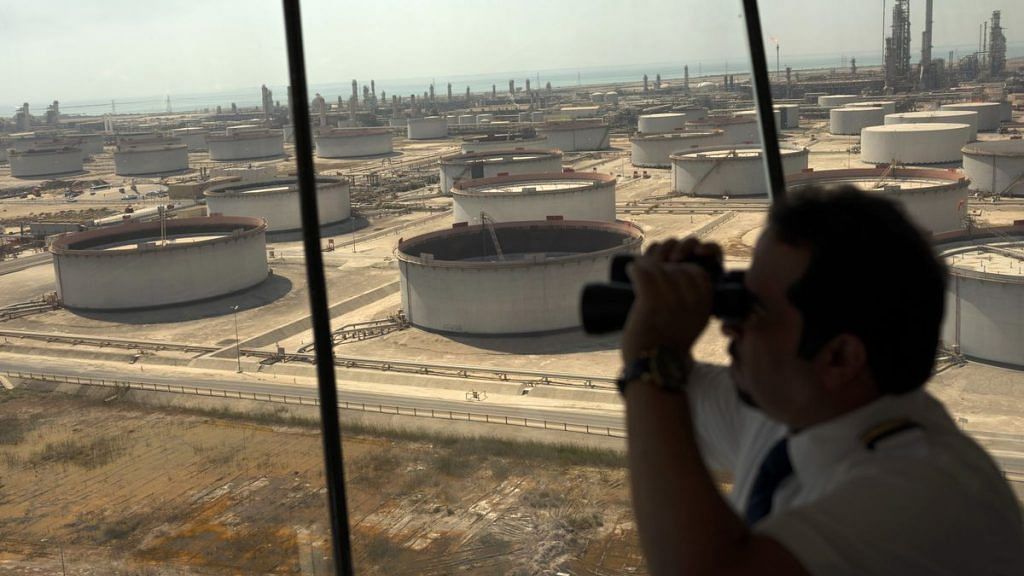Secretary of State Mike Pompeo’s most recent announcement on Iran policy has raised some eyebrows. He indicated on Monday morning that the Trump administration will not renew waivers to importers of Iranian crude and that other suppliers (meaning Saudi Arabia) have agreed to increase production in to ensure the global oil market remains well-supplied. Skeptics question whether — after last summer’s debacle — there is sufficient trust between Washington and Riyadh for this arrangement to work. What skeptics may not have digested is that, while timing remains a problem, this is a classic win-win situation. It is a near-perfect example of the very limited universe of occasions when transactional diplomacy could actually work.
Last summer, President Donald Trump leaned heavily on OPEC members, both publicly and privately, to increase their production of oil. He and others in the administration insisted that their intention was to bring exports of Iranian oil to zero by threatening — and ultimately enacting — sanctions on any entity that continued to import such crude. The idea in Washington seemed to be that Trump had done his part by withdrawing from the Iran nuclear deal and reimposing sanctions, and that Saudi Arabia and others needed to do theirs by ensuring that high oil prices did not result from these actions.
Saudi Arabia and other OPEC members did, in fact, open the spigots in the months following OPEC’s annual meeting in Vienna last June, and by November the market seemed prepared to absorb the news that big importers of Iranian oil — such as China, Japan, India and Turkey — would stand to bear economic costs if they continued to rely on Iran. But, much to everyone’s surprise, Trump issued sanctions waivers to eight countries. Without pressure for the future contraction of Iran’s exports, and with the extra OPEC oil already on the market, oil prices declined by nearly a third from the beginning of November until the end of December 2018. Saudi Arabia, having raised its oil production when it had preferred to stay its course, felt burned and has since joined the growing club of countries lamenting the unpredictability of the Trump administration.
Also read: India unlikely to stop oil import from Iran despite US move to end waivers
One might think that Riyadh would bristle at the possibility it could be taken to the cleaners in the same way again in less than a year. But today differs significantly from last summer in a few key ways, meaning the decision not to extend waivers is giving a gift to Saudi Arabia, not asking for a leap of faith.
Most importantly, today, Saudi Arabia is in a more difficult position — oil wise — than it was in June 2018. The most recent agreement made between OPEC and its non-OPEC partners at the end of last year to cut oil production by 1.2 million barrels of oil a day seems to be working. The group as a whole has met its intended production cut and prices have been buoyed to about $70 a barrel — close to what Saudi Arabia and many others need to finance their budgets; this price has been achieved despite U.S. oil production that continues to outperform even upbeat projections.
But a closer look reveals that this situation is almost entirely attributable to significant cuts made by Saudi Arabia in order to make up for Russia, Nigeria and other countries which claimed they would rein in production, but have failed to do so. According to March 2019 numbers, Saudi Arabia alone has curtailed its oil production a bit more than the entirety of OPEC as a whole pledged to do. Riyadh has met its pledged production cut nearly three times over (in contrast to just having done its share in the summer of 2018 when Trump began his pressure).
Riyadh has an obvious interest in keeping prices high so that it has some wiggle room when it comes to unpopular economic reforms and in order to ensure that Aramco shares are highly valued when the state-owned oil company goes public. But achieving prices around $70 a barrel at the expense of so much market share no doubt irks the kingdom and reminds it of earlier episodes — such as the 1980s — when Saudi leadership in global oil markets eventually created enormous domestic economic challenges.
Trump’s decision not to issue waivers to the importers of Iranian oil, despite an oil price that is, from his perspective, likely uncomfortably high, gives Saudi Arabia the chance to absorb Iran’s market share without compromising the price. In short, it is a sweet deal for Saudi Arabia economically (not to mention the strategic value to Saudi Arabia of weakening its regional nemesis).
The second way in which this situation differs from last summer is that of timing. Unlike last June, when Saudi Arabia was asked to increase production months in advance of when the sanctions were due to go into effect, only 11 days remain before the current waivers expire on May 2, and the Trump administration needs to reveal its hand. From Saudi Arabia’s perspective, this compressed timeline has benefits, as the kingdom can bring only so much more oil to market much before Trump makes good on his word; in general, it takes approximately a month for spare capacity to be reactivated.
Nevertheless, from the perspective of the rest of the world, this timeline should make us squeamish. The word of both the U.S. and Saudi Arabia is not what it used to be. Keeping markets calm if they see curtailed Iranian exports before they see increased Saudi production may be close to impossible.
Meghan L. O’Sullivan is a Bloomberg Opinion columnist. She is a professor of international affairs at Harvard’s Kennedy School, and a senior fellow at the Council on Foreign Relations. She served on the National Security Council from 2004 to 2007.
